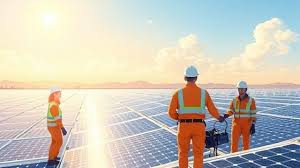Column
NDDC Probe: Matters Arising
Dissatisfied with the running of the Niger Delta Development Commission (NDDC), a coalition of youth groups in Rivers State recently asked the Federal Government to dissolve both the board and management of the commission. The youth bodies, alleging corrupt practices in the commission, in an interview with newsmen in Port Harcourt, accused the Managing Director of NDDC, Mr. Chibuzor Ugwuoha of financial impropriety, and called for his removal. Specifically, a spokesman of one of the youth groups, Mr Robertson Jack said “Niger Delta youths are not happy with the way and manner the commission is being managed”, and asked for its complete overhaul.
Perhaps, moved by the allegations and actions of the youth groups, as well as other stakeholders, the Federal Government, last Thursday, constituted a seven-man, Presidential Committee to look into the problems facing the NDDC. Inaugurating the committee in Abuja, Senator Anyim Pius Anyim, Secretary to the Government of the Federation, urged the probe panel to properly investigate the problems facing the NDDC, and recommend how best the commission could forge ahead in order to develop the Niger Delta region.
Responding, chairman of the seven-man committee, Steve Oronsaya, former Head of Service of the Federation, said the panel would unravel the mystery affecting the smooth running of the commission. He expressed the profound gratitude of the committee members for the appointment, and assured the Federal Government that the body would live up to its expectations.
Viewed against this backdrop, it would be recalled that the NDDC, established to fast-track the development of the Niger Delta region, has literally nose-dived. Why? Projects initiated by the authorities of the commission, designed to give meaning to the life of Niger Deltans, have been dumped due largely to poor funding of the agency by the federal authorities, as well as the internal wranglings within the agency.
Since its inception, the commission appears to be impacting positively on the lives of Niger Deltas. Indeed, nearly all the 185 local governments in the oil-rich region have benefited. Yes, out of all its projects, about 1,250 have reportedly been completed. Regrettably, the rest projects, which would have lifted the life of Niger Deltans, are begging for attention following the non-release of funds due the commission, and the in-fighting in the commission.
Piqued by the sad development, Pastor Power Aginighan, Executive Director, Finance and Administration of NDDC in May, 2010, wailed over the unfortunate situation. His words: “The commission has received N561,918 billion since its inception in July 2000, and is currently being owed N477 billion by the various statutory bodies.
Addressing guests when the Presidential Monitoring Committee visited the commission’s head office in Port Harcourt, in May, last year. Aginighan lamented that the N477 billion being owed the commission was truncating the operations of the agency, especially the execution and completion of projects already initiated. He would want the authorities concerned to have a rethink on the poor funding, considering the huge projects the commission was handling currently.
As it were, a breakdown of the amount so far released to the NDDC since its inception shows that the commission has been getting about N50 billion yearly from the federal authorities. What this translates to, is that, a little above N9 billion is being spent annually for the execution of projects in each of the nine states in the Niger Delta region. This, to say the least, is tantamount to gross under-funding of NDDC, given the array of projects planned in the region by the commission.
Therefore, the National Assembly should prevail on the authorities to ensure that the NDDC gets all the money due to its statutorily to be able to increase the tempo of its activities. Yes, the lawmakers, should spearhead the struggle for the release of the outstanding NDDC funds. The whopping N477 billion being owed the commission will, in no mean way, give some assurance concerning the development of the oil-rich region.
Happily, the immediate past National Assembly, consistently demonstrated a better understanding of the plight of the people of the Niger Delta region than the executive arm of the Federal Government. Unlike the executive, that appears unsure of what to do to solve the serous problems of the region, the lawmakers showed commendable commitment to facilitate the rapid socio-economic transformation of the region that produces over 90 per cent of the country’s wealth. This has been evident from the very time the bill for the establishment of NDDC was being processed into law. Although the bill was the second to be sent to the National Assembly by former President Olusegun Obasanjo, he refused to assent to the bill because of some disagreements. The lawmakers vetoed him by voting overwhelming for its passage. Thus, it was not surprising that the legislators showed keener interest in the survival and success of the NDDC than the federal executive, right from Obasanjo’s administration.
What’s more, it is common knowledge that former President Obasanjo starved the agency of its statutory funding. This is responsible for the N477 billion that the federal government owes the commission up till date. But since late President Umaru Musa Yar’Adua, placed emphasis on respect for the rule of law, there was hope that the withheld funds would be released. But that was not to be. Yar’Adua’s inclusion of the Niger Delta in the Seven-Point Agenda of his administration and the creation of the Ministry of Niger Delta Affairs, also created the impression that the late president placed high premium on the development of the oil-rich region. Sadly, all that yielded no desired result.
As a result, a lot of people were disappointed by the provision for the Niger Delta in the 2009 budget. The allocation of only N27 billion to the NDDC and N50 billion to the ministry came to many as a shock. One does not want to believe that the intention of the late Yar’Adua administration was to merely split what was budgeted for the NDDC and the ministry.
One can recall vividly that when the House of Representatives Committee on Public Accounts visited the commission headquarters, last year, and after seeing some of the projects executed by the commission, its Chairman, Usman Mohammed, at the time, expressed satisfaction with what the commission has achieved so far. He said: “We are on a value-for-money assessment of the projects and books of the commission and from what we have seen, there is no doubt that the NDDC has performed creditably”.
Gladdened by what it saw on ground, the committee called for the release of the 50 per cent of the ecological fund due to the nine NDDC member-states as stipulated by the law setting up the agency. For some inexplicable reasons, the commission has not got a kobo from the fund since its inception, though it is a legal imperative. The ecological fund, which was set up by Decree 36 of 1984 and 106 of 1992, was meant to ensure that adequate provision was made to address environment problems in all parts of the country.
While welcoming the committee members, the former Managing Director of the NDDC, Mr Timi Alaibe, blamed the problem of the Niger Delta on the long years of neglect, occasioned by the government’s abdication of its responsibility to the citizens of the area. He told the delegation that the commission had since 2008 commenced full implementation of the Niger Delta Regional Development Master Plan, based on late President Yar’Adua’s directive. He said with adequate funding, the commission should be able to address some of the infrastructural problems like roads, bridges, among others, in the region.
All said, the probe panel must note that the problems of NDDC also borders on under-funding and unwillingness of the executive to do what is needful in the troubled Niger Delta region. The panel should therefore make recommendations that would spur the authorities concerned to release the over N477 billion being owed the commission by the Federal Government and other statutory bodes.
While this column is not holding brief for the NDDC, it believes fervently that it is only by adequate funding of NDDC, that Niger Deltans will be convinced that truly the Federal Government means business to transform the region.
Column
Renewable Energy Faces Looming Workforce Crisis

Column
Why Oil Prices Could See Significant Upside Shift

Column
Nuclear Stocks Soar on Stargate AI Infrastructure Announcement
-

 Business3 days ago
Business3 days agoPETAN, Others Unveil ALCO, Get NCDMB’s Support … Mull Synergy With APPO, AU
-

 Sports3 days ago
Sports3 days agoNYG:154 Nasarawa Contingent Storms Kwara For Zonal Eliminations
-

 Business3 days ago
Business3 days agoAON Lifts Ban On Freed Ibom Air Passenger
-

 Sports3 days ago
Sports3 days agoNigeria delegation Visits London over 2030 Commonwealth bid
-

 News3 days ago
News3 days agoNigeria’s Debt To W’Bank IDA Hits $19.2bn -Report
-

 Sports3 days ago
Sports3 days agoD’Tigers flawless finish against Lions in AfroBasket
-

 News3 days ago
News3 days agoChurch Renders Free Medical Outreach, Others To Host Communities
-

 Maritime3 days ago
Maritime3 days agoNCC Announces Telecoms Facilities Protection Measures

